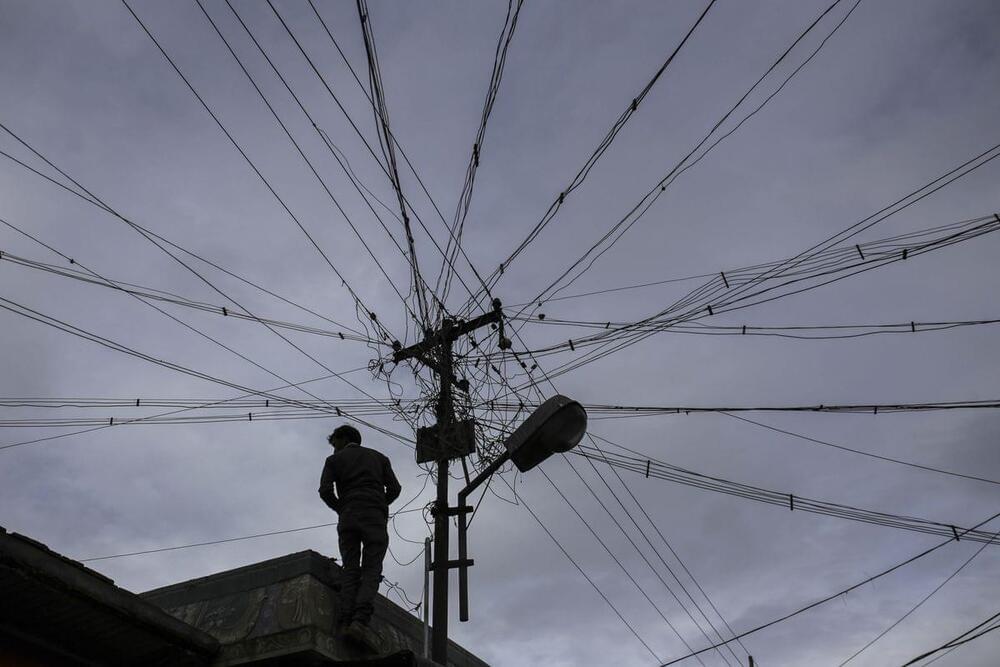This doesn’t align with our approach, PC giant tells us.



Details have been disclosed about a now-addressed critical vulnerability in Microsoft’s Azure Automation service that could have permitted unauthorized access to other Azure customer accounts and take over control.
“This attack could mean full control over resources and data belonging to the targeted account, depending on the permissions assigned by the customer,” Orca Security researcher Yanir Tsarimi said in a report published Monday.
The flaw potentially put several entities at risk, including an unnamed telecommunications company, two car manufacturers, a banking conglomerate, and big four accounting firms, among others, the Israeli cloud infrastructure security company added.

Following November’s catastrophic flooding events, roughly 600 Merritt residents still haven’t returned to their homes, but a 3D printer may speed up the process. Greg Solecki, the Merritt’s recovery manag.
“Our biggest priority is getting people back to Merritt and into homes and this 3D-printed option is looking like the most viable one right now,” Solecki said.
READ MORE: 3D printing’s new challenge: Solving the US housing shortage
With funding from the province, security guards are also patrolling evacuated homes as of March 4 with the Merritt RCMP reporting a rise in the break and enters, especially in the currently evacuated Phase 4 portion of the city.


Homomorphic encryption is considered a next generation data security technology, but researchers have identified a vulnerability that allows them to steal data even as it is being encrypted.
“We weren’t able to crack homomorphic encryption using mathematical tools,” says Aydin Aysu, senior author of a paper on the work and an assistant professor of computer engineering at North Carolina State University. “Instead, we used side-channel attacks. Basically, by monitoring power consumption in a device that is encoding data for homomorphic encryption, we are able to read the data as it is being encrypted. This demonstrates that even next generation encryption technologies need protection against side-channel attacks.”
Homomorphic encryption is a way of encrypting data so that third parties cannot read it. However, homomorphic encryption still allows third parties and third-party technologies to conduct operations using the data. For example, a user could use homomorphic encryption to upload sensitive data to a cloud computing system in order to perform analyses of the data. Programs in the cloud could perform the analyses and send the resulting information back to the user, but those programs would never actually be able to read the sensitive data.

India will invest 120 billion rupees ($1.6 billion) to add new lines to transmit electricity from renewable plants as it seeks to draw half of its energy requirement from greener sources by 2030.
Dedicated transmission lines of 10,750 circuit kilometers will be built across seven provinces under the second phase of the so-called green energy corridor project, Information and Broadcasting Minister Anurag Thakur said in New Delhi. The project, approved by Prime Minister Narendra Modi’s cabinet on Thursday, will be completed by 2026 and transmit 20 gigawatts of renewable energy capacity, he said.
India is targeting to build 500 gigawatts of installed power capacity from non-fossil sources by 2030, which would require a transmission network to enable clean electricity to flow from plants to consumers. The new lines will also help integrate renewable energy into the national grid and contribute to long-term energy security, according to the government.


An object hidden below ground has been located using quantum technology — a long-awaited milestone with profound implications for industry, human knowledge, and national security.
University of Birmingham researchers from the UK National Quantum Technology Hub in Sensors and Timing have reported their achievement in Nature. It is the first in the world for a quantum gravity gradiometer outside of laboratory conditions.
The quantum gravity gradiometer, which was developed under a contract for the Ministry of Defence and in the UKRI-funded Gravity Pioneer project, was used to find a tunnel buried outdoors in real-world conditions one meter below the ground surface. It wins an international race to take the technology outside.
Russian President Vladimir Putin has been preparing for the war in Ukraine in plain sight, said Russian Chess grandmaster Garry Kasparov. He added that the Russian invasion of Ukraine could have been avoided had Western countries listened to what Vladimir Putin had been saying.
In an exclusive interview with India Today, Kasparov said, “Back in 2007 at the Munich Security Conference, he [Putin] had talked about spheres of influence. He wanted the world to be divided in the fashion of the past where big countries dictated to smaller countries how to behave.
“Putin has been preparing for the war in Ukraine in plain sight. He bought his Pacific fleet to the Black Sea. Russian forces have now surrounded Ukraine from all sides.“
The 58-year-old former World Chess Champion, however, said that what is happening in Ukraine now is a deviation from Russia’s plans.
“Russia failed to take over Kyiv in two or three days as planned. The heroic defence by Ukrainians has harmed Putin’s image as an invincible leader,” Kasparov said.
Watch the exclusive interview.
#GarryKasparov #RussiaUkraineWar #RussiaInvadesUkraine #RussiaDeclaresWarOnUkraine #IndiaToday.
All you need to do is PRESS THE BELL ICON next to the Subscribe button!
India Today TV is India’s leading English News Channel. India Today YouTube channel offers latest news videos on Politics, Business, Cricket, Bollywood, Lifestyle, Auto, Technology, Travel, Entertainment and a lot more.
Stay tuned for latest updates and in-depth analysis of news from India and around the world!
Follow us: Official website: https://www.indiatoday.in/
Twitter: https://twitter.com/IndiaToday.

DoD announced today awards of $28.7 million in grants to 17 university-based faculty teams through the FY2021 Minerva Research Initiative to support research in social and behavioral science.
“We live in a dynamic world, and many of the challenges we face are social or have social elements to them,” said Dr. Bindu Nair, Director, Basic Research Office in the Office of the Undersecretary of Defense for Research and Engineering. “The knowledge and methodologies generated from Minerva awardees have improved DoD’s ability to define sources of present and future conflict with an eye toward better understanding the political trajectories of key regions of the world.”
This initiative supports basic research that focuses on topics of particular relevance to U.S. national security. Through its network of faculty investigators, the Minerva Research Initiative also strengthens the Department’s connections with the social science community and helps DoD better understand and prepare for future challenges, including National Defense Strategy priorities.